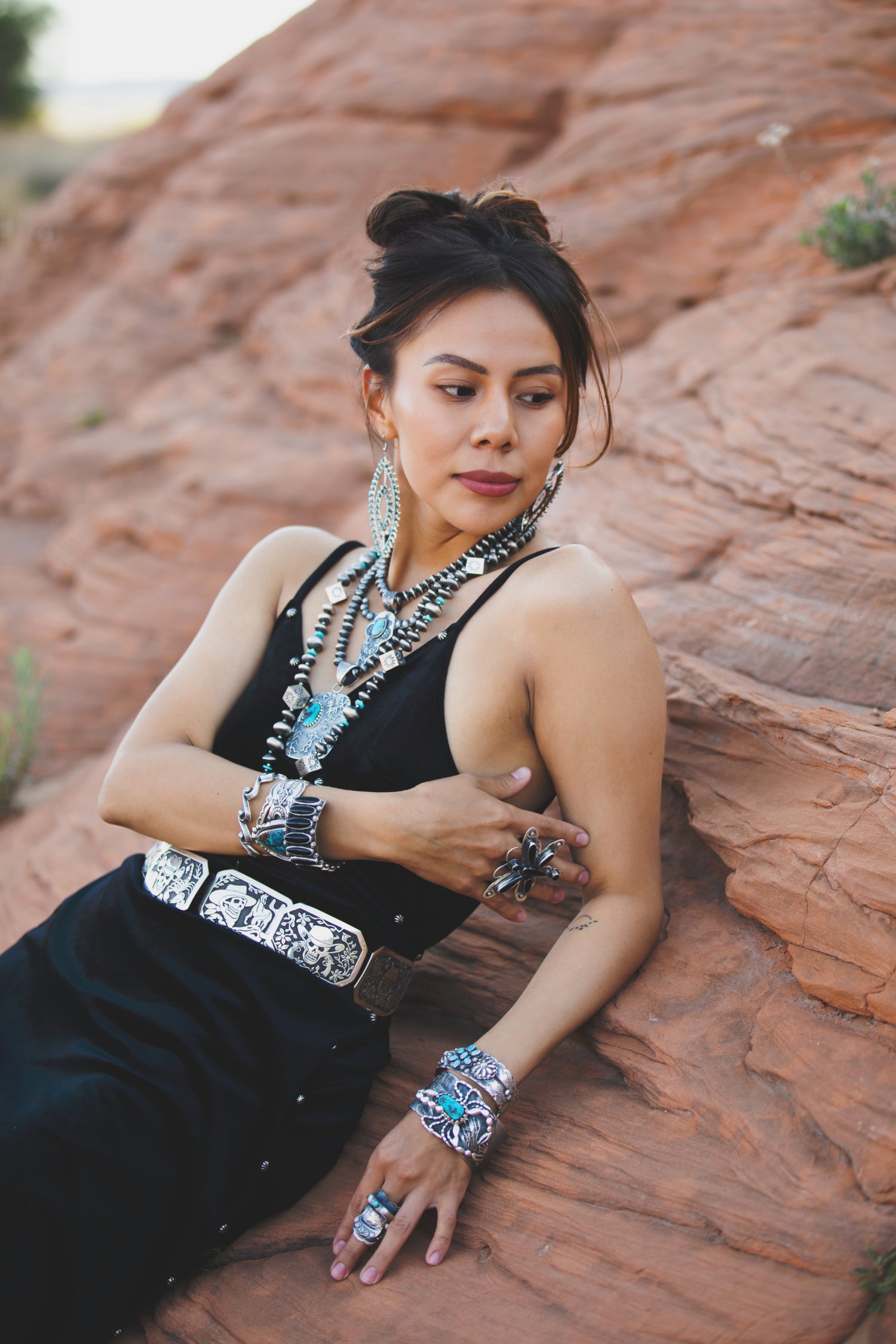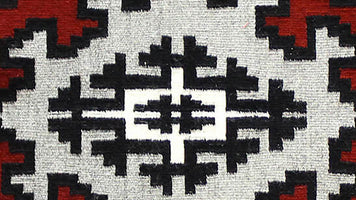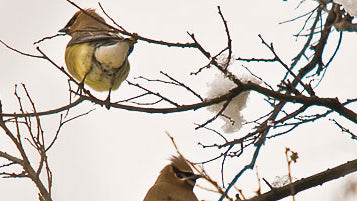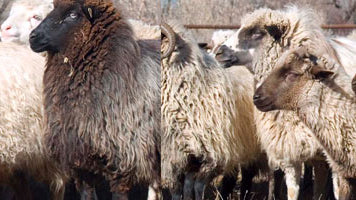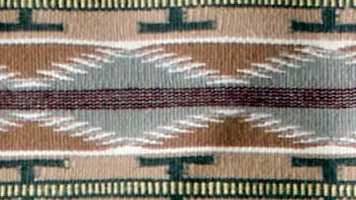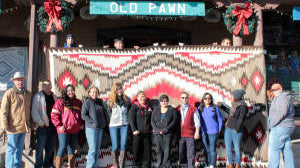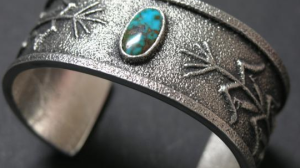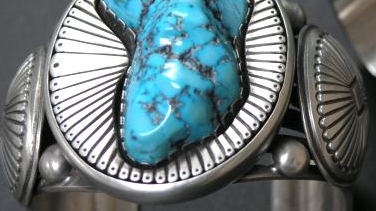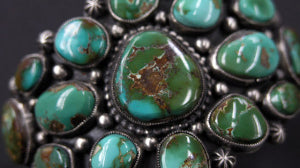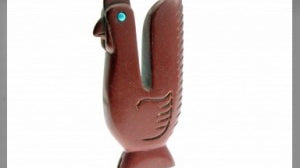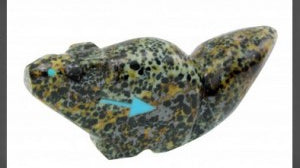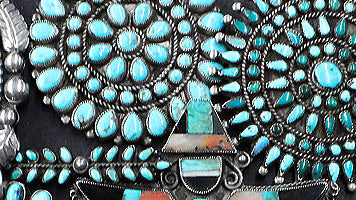Perry Null Trading
The Navajo Rug and Weaving
High in the Chuska Mountains on a midsummer afternoon, Mary, a Navajo elder, sits under a juniper, carding wool for a Navajo rug and watching her sheep. The meadow grass is high, its verdant green dotted with purple, white and yellow wildflowers. From the time of her mother's mother, Mary's family has moved their flock from the searing heat of the lower valley to the cool pastures in the Chuska range; the bleating sheep winding their way along well trodden paths near the Crystal highway. Up go the sheep in the spring and down in the fall, in a treasured, repeated ritual..
Tree of Life Navajo Rug
From the beginning of recorded history man has revered trees as sacred symbols of creation, fertility, resurrection and immortality. With roots firmly planted in the earth, sturdy trunks and branches reaching to the sky, trees were believed to connect the three realms of existence: underworld, terrestrial and celestial. Since the days of Mesopotamia trees such as the palm, ash, beech, oak and pine have been viewed as ladders leading from the unconscious to enlightenment, sheltering canopies for all of creation, shamanic routes to knowledge and pillars between heaven and earth. The Tree of Life Navajo Rug, or Cosmic Tree, is associated with the sacred feminine, with springs, vegetation and life giving waters.
Two Grey Hills Navajo Rug
The Two Grey Hills Navajo Rug combines two mastered skills of the Navajo, weaving and sheep. This is one of the most prized collectibles, find yours now!
Wide Ruins Navajo Rug
It was late summer, 1942, and Gladys, an elder Navajo weaver, walked across the sun drenched desert gathering native plants for vegetal dyes. It had rained the day before and the land was fresh, with the heady aroma of sage filling the air. Gladys was collecting the yellow flowers of rabbitbrush to dye wool for a Wide Ruins rug. She knelt beside a particularly robust plant, faced the east, made an offering of sacred chips and said prayers.
Wholesale Native American Jewelry
Gallup, New Mexico is known as the Indian Capital of the World. It is here, high on the Colorado Plateau that you will find the most magnificent turquoise blues and deep coral reds. The town is dedicated to the handmade arts of the Navajo, Zuni and Hopi craftsmen.
Villa Grove Turquoise
The Villa Grove turquoise mine, once known as Hall mine, is northwest of the town of Villa Grove in the San Luis Valley of Colorado. Villa Grove was one of the Colorado mines that showed signs of ancient Indian workings. It was rediscovered sometime in the 1890’s and mined for copper with major turquoise operations beginning in the early 1900’s. Villa Grove turquoise is a bright blue turquoise mined both clear and also with a fine spider web which sometimes resembled the finest Lone Mountain turquoise from Nevada. In fact the Villa Grove mine was owned in 1965 by Menalis Winfield, who had also owned the Lone Mountain mine in Nevada. Although very rare, turquoise from this area can still appear in today’s market.
Tyrone Turquoise
Tyrone turquoise encompassed a group of mines in the Burro Mountains near the town of Silver City, New Mexico and is associated with the Tyrone Copper mine. It has been said that more high-grade turquoise was produced in this area than any single deposit on record. Turquoise mining in the Burro Mountains had been carried out in prehistoric times and then later by the Spanish. Artifacts, stone tools along with fragments of turquoise and hammers of the local granite were common at the sites. An early mining engineer named Zalenski had noted that after visiting the mines in 1907 there were still traces of fire used to break up the rocks and that one forty-foot shaft still remained though most of the work in the area had been done in open trenches. Kunz, in his work mentions an old Indian burial ground in the area, in which turquoise was found in some form in every grave. Ancient operations helped to determine the locations of some of the more modern claims.
Sleeping Beauty Turquoise
The Sleeping Beauty turquoise mine is located in Globe, Arizona. It derives its name from the Sleeping Beauty Mountain in the area and at one time was part of the Copper Cities copper operation. The mine produces a uniform light to medium blue turquoise. Because of its uniformity it has been a favorite of the Zuni Pueblo. Silversmiths there often use it in inlay, petit point and needlepoint, and matched jewelry sets.
Royston Turquoise
The Royston district is one of the better known turquoise producing areas in Nevada. Royston turquoise comes from a group of mines about 24 miles northwest of Tonopah. Although the district is made up of a number of small mines the three more important mines are the Royal Blue, the Bunker Hill, and the Oscar Wehrend. Royston turquoise can be unbelievably beautiful. High-grade Royston is a very hard material. Colors range from a light blue, intense blue or a dark sky blue. Also included are a number of shades of green and many times with green and blue together in one stone. The matrix includes different shades of brown. The best Royston is equal to that found in any American mine.
Rooster Zuni Fetish Meaning
What is the Rooster Zuni Fetish Meaning? Anyone with a basic knowledge of chickens knowns that the rooster is always the first animal awake in the morning. The "early bird gets the worm," and the Zuni fetish of a rooster represents that tendency to rise early and to settle for nothing less than the very best of things. He is also considered vain and likes to be given attention and lavished with gifts.
Squirrel Zuni Fetish Meaning
What is the Squirrel Zuni Fetish Meaning? Squirrels are known for planning for the future and storing away things for a day when there is need for them. Fetishes play an important role in Zuni culture, and if you have a squirrel in your collection you may wonder what it represents. The squirrel embodies natural intelligence, saving, and the protection of reserves. He represents the ability to plan ahead and is very industrious.
Turquoise Jewelry - Buying Native American Art
The allure of the American southwest is legendary. Its brilliant blue skies, sweeping vistas, unique Native cultures and vermillion cliffs have drawn people for centuries. Yet among the land’s many captivating features one is universally acclaimed - Turquoise Jewelry.

